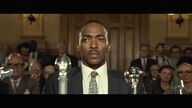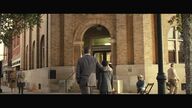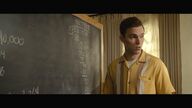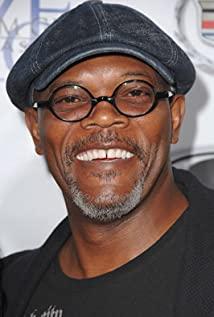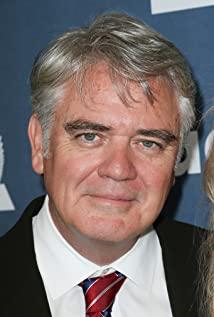The film "The Banker" is adapted from real events. It tells the story of how Bernard Garrett and the rich second-generation Joe Morris, the black bottom black, and the rich second-generation Joe Morris, faced the background of serious racial discrimination in the United States. In order to fight discrimination, the story of nearly losing ten thousand family wealth.
Yes, this is not a cool film that tells the end of good and evil. At the end of the film, in order to uphold the principles and justice in his heart, the protagonist Bernard rejected the deal proposed by the congressman, and urged in the court that blacks should also have it. He paid a very heavy price for his equality and rights-he was imprisoned with his partner Joe Morris for 3 years and lost 177 properties under his name.
To better understand the situation and pressure faced by the characters in this movie, one has to contact the background of the times they were in at that time.
Black Americans were mostly descendants of African slaves robbed and transported by European colonists. Before the complete abolition of the slavery system in the United States in 1865, blacks had been treated as commodities and were deeply exploited and abused. After getting rid of the shackles of slavery, black Americans have not been able to escape racial discrimination and segregation for a long time-they are "inferior citizens" compared to whites.
But in the struggle of history, black Americans have renewed their social status time and time again.
In the film, there is a relatively clear timeline, and the growth trajectory of the protagonist Bernard also coincides to some extent with the ups and downs of the affirmative movement in the United States at that time.
[In 1939, a shoe-shining teenager who grew up in Texas]
In the American Civil War of 1861-65, 700,000 deaths ensured the unity of the United States, and slavery was abolished at the same time.
However, although slavery was abolished and blacks are no longer slaves, in real life, blacks do not have the same social rights as whites, and discrimination is still everywhere, especially in the southern United States where slavery was once prevalent. .
Soon after the beginning of the film, Bernard, who was born in grassroots, was shining the shoes of a white businessman on the street, taking the opportunity to learn financial knowledge, and was almost arrested by security, and the actual situation is generally like this.
Bernard was born in a small town in Willis, Texas in 1922. He showed a talent for doing business very early. Because of his poor family background, Bernard saved his tuition through odd jobs and started his own cleaning business after he finished 11th grade in Houston.
As expressed in the dialogue between Bernard and his father in the film, he knows that if he really wants to have wealth-"make money like white people", he must leave his hometown of Texas in order to survive in the racially oppressive environment. Get some weak loosening and freedom.
In the middle of the film, Bernard has a successful career. When he took his son back to his hometown, he saw the phenomenon of apartheid everywhere, and he looked melancholy when facing a flag hung in front of someone's door—that flag. It was the flag of the Southern Union during the Civil War, and in a sense it was also a symbol of racial discrimination.
At that time, it has been 24 years since he left his hometown to seek development when he was young.
[In 1954, Bernard moved to Los Angeles with his wife and children]
In reality, Bernard had two marriages.
In 1945, 23-year-old Bernard drove a dilapidated truck with his wife and children to California to look for opportunities. As soon as I arrived in California, I started the business of cleaning services and collecting waste paper, and eventually saved enough money to buy real estate in Los Angeles.
As shown in the film, the young Bernard met Barker, a white real estate investor, and quickly developed his own business through cooperation with him-but due to the pressure of racial discrimination at the time, Bernard could only act in the cooperation. For "invisible people" who secretly operate, all business agreements are mostly fulfilled in the form of verbal promises.
By 1954, Bernard was worth 1.5 million U.S. dollars, equivalent to the current 14.3 million U.S. dollars, making him one of the richest blacks in the United States at that time.
However, due to Barker’s sudden death and his widow’s refusal to honor their previous agreement, Bernard experienced for the first time the helplessness of being a black man in business cooperation, and had to accept the fact that his interests were damaged. .
At the same time, this frustration also inspired Bernard. Not only did he realize that he could buy a bank building to facilitate future loan applications, but he also thought of hiring other white people to help him continue to play the role of Barker in future business activities. ——From then on, it is the story we saw in the film about him and his partner training the white bottom Matt.
The whole experience seemed legendary, but it was really helpless.
After all, in the United States at the time, a small matter could cause serious racial confrontation, and discrimination against blacks by whites was very serious in society at that time.
Here, we have to mention the "Montgomery Bus Boycott" triggered by Rosa Parks in 1955 and the "Little Rock Incident" in 1957.
At that time, the southern states of the United States were still implementing Jim Crow laws, which generally refer to the southern states and border states of the United States from 1876 to 1965 against people of color (mainly for African Americans, but also include Other ethnic groups) implement the laws of apartheid. These legal racial segregation forced public facilities to be used separately according to their races. Such differential treatment has caused blacks to have long been in a relatively disadvantaged position in the economy, education, and society.
On December 1, 1955, when Rosa Parks, a black female worker, was riding on a bus, the bus driver ordered Rosa Parks to give way to a white passenger because the white seat was full. Rosa Parks refused to obey. The driver ordered and was arrested by the police, which triggered the year-long "Montgomery Bus Boycott", which became an important symbol of the American civil rights movement in the mid-20th century.
This public transport boycott lasted for 381 days-civil rights fighters called on African Americans in Montgomery to refuse to take public transportation, walk or take taxis to and from get off work, in order to express their opposition to Rosa Parks' arrest and segregation policy.
For more than a year, the bus company in Montgomery suffered a heavy financial blow.
On November 13, 1956, the U.S. Supreme Court finally declared that Alabama’s Apartheid Act violated the U.S. Constitution and that the Apartheid Act was invalid and should be cancelled immediately.
The news reached Montgomery, and the blacks were boiling. Martin Luther King, Ms. Rosa Parks, her lawyer, and the white pastor who had been helping blacks to speak up, got on the first car after the abolition of the Apartheid Act. Buses-they deliberately chose a front row position that only white people were allowed to sit in in the past.
Just because they want to use bus seats equally, it has caused a long and difficult struggle for a year.
From this it can be seen that it is not difficult to understand why after Bernard acquired the white apartment building, the old white lady in the film would fiercely refuse, and in the end she would rather move than live with a black man.
I can also appreciate the courage, courage, and helplessness behind Bernard breaking conventions and using white people as his "image spokesperson" in that era.
One year later, the "Little Rock Incident" that occurred in 1957 also reflected that "racial discrimination" was still a serious social contradiction in American society at that time.
The Little Rock Incident is also known as the "Little Rock Nine Incident". This is a confrontation that occurred in Little Rock, Arkansas, in the United States around the segregation policy in public schools.
In September 1957, the Little Rock School Committee announced that it would gradually change the phenomenon of segregation in schools, and admitted nine black students to the white central middle school for the first time.
The nine black students admitted were all carefully selected. Not only were they excellent in character and academics, they also belonged to the upper-middle class family background, but despite this, they were still early and fiercely opposed by white racists.
Some white people claimed to use violence to prevent blacks from entering white schools. With the support of Governor Fabs, he sent the State National Guard to try to prevent black students from entering the school.
Subsequently, President Eisenhower federalized the National Guard of the state and sent paratroopers to the state to enforce federal court decisions to ensure that black students enter the school normally-but even so, these black children still need to be in their daily studies. Facing discrimination and humiliation from white classmates.
After understanding this, it is not difficult to understand. When Bernard first proposed to his partner Joe Morris in 1963 that he wanted to buy a bank in his hometown of Texas, why Joe seriously questioned his impracticality and naivety.
In fact, just as Joe predicted, the investment of the two ultimately ended in failure.
But even if he knows that the risks are great, Joe is willing to accompany Bernard on the adventure, which proves that the two are no longer just pure business partners, but have already become close friends who have experienced the ups and downs of life together.
In the film, the two boldly used white people as their stand-in to open up their own business territory. It is a real thing. In order to better supervise their business, they are willing to become drivers and cleaners to supervise and guide the stand-in. Really happened.
Regrettably, it is true that the bank’s acquisition of business failed in the movie, which led to the dissipated wealth and imprisonment of the two.
As shown in the movie, their white "stand-in" Matt made a series of mistakes after the banking law was adjusted, implicating the two in jail. In this catastrophe, Bernard and Joe Morris almost lost everything. Of the 177 properties they owned, only one was left in the name of Bernard's wife, and they were sentenced to three years in prison.
After being released from prison, these two best friends in life moved to Panama and once again joined hands to restart each other's careers.
In the subsequent interview, I also learned that the original story of this film came from Bernard himself. He has always hoped that the legend of himself and Joe Morris will be known to future generations, so as early as more than 20 years. I found two screenwriter friends to write this script.
Many years after his death, his son took this story and went to a Hollywood producer, and the manuscript was changed several times to make the "The Banker" we see today.
Surprisingly, when searching for information, I found that, unlike the experience shown in the film, Bernard had two marriages in his life. His second wife was a white man and gave birth to him. I had two daughters, and the disputes between the three half-children caused this "The Banker" to be in trouble for a while, which delayed the launch of Apple TV+ in the United States.
After the death of Bernard Garrett, the son he gave birth to with his first wife became the copyright holder of his father's life story and became the co-producer of the film. And the two daughters born to Bernard and his second wife, before the film was about to be released, publicly accused "The Banker" of distorting the facts in the plot-their brother deliberately excluded the three of their mother and daughter, and accused this A half brother had sexually assaulted the two for a long time...
This explosion of negative news caused the release of the film to fall into a passive situation for a time.
Unexpectedly, no matter how inspired and hard-working Bernard is, his son still falls into the cliche and becomes the stubborn "playboy" that Bernard scorns the most in the film, and even the rape of long-term incest and sexual assault on his two sisters. Commit...
It seems that regardless of whether the film changes the self-real event, it can only represent a part of the history of the protagonist, or a certain aspect, and the real life behind the film is often unexpected by the audience.
And movies are just movies. How much of the wisdom and fraternity shown in it comes from reality, and how much is whitewashed legend, we outsiders will not know.
Material reference:
"The American Affirmative Movement Under the Bayonet"
"Real-life adaptation works are risky, and two new films in the awards season are involved in trouble"
View more about The Banker reviews




